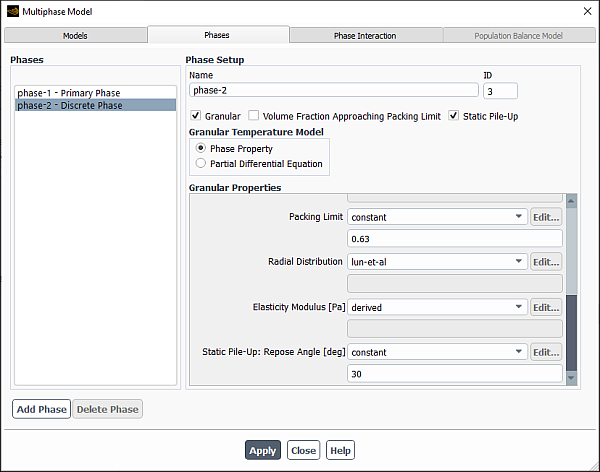When the dense discrete phase model (DDPM) is applied to a dispersed flow in which the dispersed phase driven by gravity may sink to the bottom and reach the maximum volume fraction physically possible, inaccuracies in phase mass conservation may occur. To prevent the unphysical particle accumulation, using the Volume Fraction Approaching Continuous Flow Limit or (for granular phases) Volume Fraction Approaching Packing Limit option is recommended (Phases tab of the Multiphase Model dialog box).
When beta feature access is enabled, you can use an alternative formulation for granular flow cases, in which particles driven by gravity to the bottom of the flow domain pile up and may form a static heap resting on a bottom wall. When using this formulation, Ansys Fluent prevents particles from entering regions where the discrete phase volume fraction is already near or above the packing limit. Also, special treatment is applied to particles near the surface of the packed region (static heap). This aids in capturing the formation of an angle of repose and allows the continuous phase flow to lift and move particles away from the surface of the packed region.
To use this formulation, enable the Static Pile-Up option for the granular phase in the Multiphase Model dialog box (Phases tab). You can use this option alone or in conjunction with the Volume Fraction Approaching Packing Limit option.

Currently, you can control the behavior of the granular phase at the heap surface through the Static Pile-Up: Repose Angle parameter (Granular Properties group box).
The following limitations currently apply when using the Static Pile-Up option:
The Static Pile-Up option is available only with high-resolution tracking.
Static Pile-Up is not supported for 2d-axisymmetric analyses (both with and without swirl).


